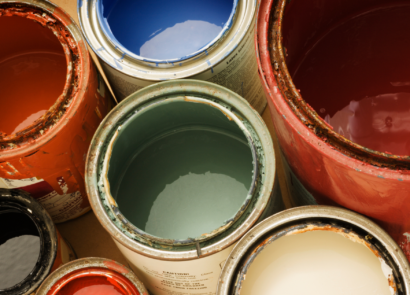As the cold weather sets in and most home improvement projects wrap up across the province, Product Care Recycling is proactively helping Newfoundland and Labrador residents with responsible household paint storage and disposal. To encourage sustainable practices, Product Care Recycling is reinforcing the BUD Rule, which stands for Buy what you need, Use what you buy, Drop off the rest for recycling. This simple yet impactful guideline emphasizes responsible consumption and waste management to minimize negative environmental impact.
According to a recent survey conducted by Product Care Recycling, more than three quarters of Newfoundland and Labrador residents have purchased interior or exterior household paint within the last 5 years. Among these residents, 84% found themselves with leftover paint. Around a quarter of this excess paint was recycled, while the remaining majority was stored for future use. It’s important to know that, depending on the type of paint, the lifespan, once opened, is anywhere from 3 to 10 years – if it has been stored properly.
“Residents of Newfoundland and Labrador have shown remarkable commitment to preserving their beautiful natural surroundings,” says Brian Bastien, President and CEO of Product Care Recycling. “The BUD Rule aligns perfectly with the culture of responsible waste management: by buying only what you need, storing paint properly to ensure you can use it up, and recycling the rest, we can contribute to a cleaner, greener, province.”
Tips for responsible paint usage and storage
- Buy only what you need by speaking with your paint retail team or using an online paint calculator to determine how much your project requires
- If you do have leftover paint, ensure tight sealing of paint can after each use
- Store paint cans in dry place, avoiding exposure to extreme temperatures
- Protect paint cans from direct sunlight to prevent deterioration
- Elevate paint cans to prevent contact with damp surfaces, which can lead to rusting and compromised integrity
- Label paint cans clearly with brand, colour, purchase date, and open date for easy identification
- Thoroughly mix paint before use, especially if it has been sitting for a while
- Regularly inspect paint for expiration and usability
Remember to take inventory of your stored paint and don’t leave it forgotten in storage. Unwanted leftover paint and empty paint containers can be dropped off for free with Product Care for recycling. High-quality leftover paint is also available for free at select recycling locations for community use through Product Care’s PaintShare program.
Together, we can take meaningful steps toward reducing our environmental footprint, preserving our province’s natural beauty, and securing a sustainable future for generations to come. To find a free paint recycling location near you, visit productcare.org.
###
For media inquiries, please contact:
Jeannine Bartz, Director of Communications
jbartz@productcare.org
604-306-0207
About Product Care Recycling
Product Care Recycling is a federally incorporated not-for-profit organization that provides recycling solutions for post-consumer paint, household hazardous waste, lighting products, and alarms. Since 1994, Product Care has encouraged consumers to reduce their waste and reuse when possible and to return unwanted products to a recycling location to ensure they are managed responsibly at their end-of-life. With thousands of recycling locations offering free product drop-off across Canada, Product Care makes recycling accessible and diverts post-consumer products from landfills and waterways. For more information about Product Care’s recycling programs or to find a recycling location, visit productcare.org.



